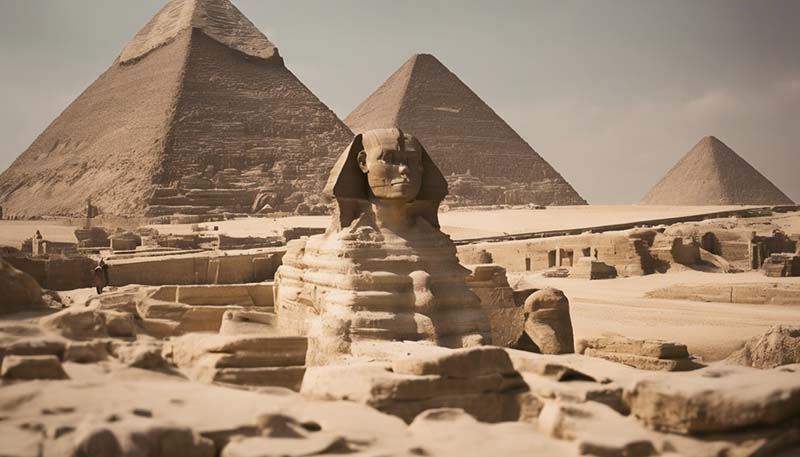The Sphinx and the Pyramids: Archaeological Wonders of Egypt
Introduction:
Welcome to the fascinating world of ancient Egypt, where the Sphinx and the Pyramids stand as testaments to the ingenuity and cultural richness of a civilization that has captivated the imagination of scholars and enthusiasts alike for centuries.
Historical Context:
The Sphinx and the Pyramids were constructed during the Fourth Dynasty of the Old Kingdom (c. 2613–2494 BC), a time when Egypt was at the height of its power and influence. The Great Pyramid of Giza, for example, is attributed to Pharaoh Khufu, while the Sphinx is believed to represent Pharaoh Khafre.
Advertisement
The Sphinx:
The Great Sphinx of Giza is a colossal limestone statue with the body of a lion and the head of a human, believed to be that of Pharaoh Khafre. It stands as a guardian of the Giza Plateau, measuring approximately 73 meters (240 feet) long and 20 meters (66 feet) high.
The Pyramids:
The Pyramids of Giza, located on the outskirts of modern-day Cairo, are perhaps the most iconic symbols of ancient Egypt. The Great Pyramid, also known as the Pyramid of Khufu, is the oldest and largest of the three pyramids and is considered one of the Seven Wonders of the Ancient World.
Archaeological Discoveries:
Over the years, archaeologists have made numerous discoveries within and around the Sphinx and the Pyramids. The recent use of non-invasive technology, such as ground-penetrating radar, has led to the uncovering of hidden chambers and passageways, further deepening the mystery and intrigue surrounding these ancient structures.
Cultural and Religious Significance:
The Sphinx and the Pyramids held significant religious and cultural importance in ancient Egypt. They were not only tombs for the pharaohs but also served as symbols of power, religious devotion, and the eternal nature of the pharaoh's reign.
Conservation and Preservation Efforts:

Preserving these ancient structures is a challenging task due to factors such as natural erosion, tourism, and urban development. Conservationists and archaeologists are working tirelessly to protect and maintain these wonders, employing modern techniques and materials to ensure their longevity.
Conclusion:
The Sphinx and the Pyramids continue to captivate the world with their enigmatic presence and the stories they hold. As we delve deeper into the history and archaeology of these structures, we gain a greater appreciation for the ancient Egyptians and their remarkable achievements.
Comments